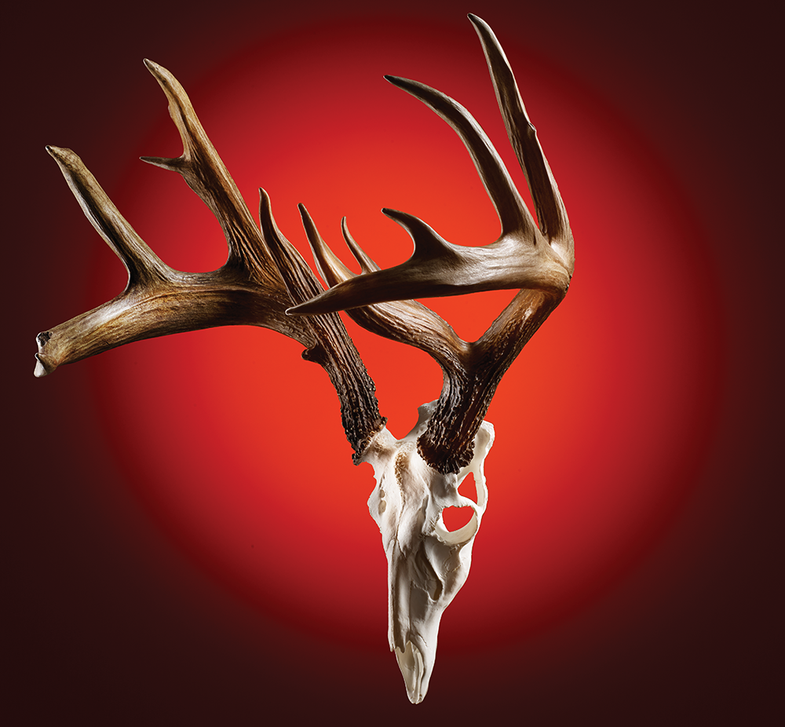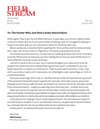State of the Deer Union
The whitetail boom is over, but it’s not all bad news

The whitetail boom is over. In just five years, deer numbers have plummeted in some states. Is this the “crash” some have predicted or a blip in an era of otherwise great hunting? In this special report, we explore the sport’s latest ups and downs
By Scott Bestul, Will Brantley, Dave Hurteau, Michael R. Shea, Josh Honeycutt, Brian Strickland, and Barbara Baird
In this space five years ago, F&S broke down the country’s unprecedented whitetail boom. We graphed the massive surge in deer numbers, the rocketing spike in B&C and P&Y entries, and the run of state-record animals. We detailed the best deer hunting this country has ever known.
Now, the bubble has burst. In just a few short seasons, buck harvests have fallen by 40 percent in some Midwestern states, and in seven of the country’s top trophy-buck states, the number of B&C and P&Y entries has plunged by more than half.
It’s not all bad, however. Female participation remains on the rise, new crossbow seasons are boosting opportunity, and some states are actually producing more and older bucks than at the height of the boom. Plus, there’s one thing that hasn’t changed in the least: We are still deer crazy—totally obsessed with every facet of our most common big-game animal. Whatever the current setbacks, if deer hunters work together, we have the collective will and power to upend the downturn and ensure great hunting ahead. —D.H.
Mad-Science Management

The North American Model of Conservation asserts that wildlife policy should be dictated by science. Yet several biologists we’ve spoken to say that their data-based recommendations (which align with hunters’ preferences more often than hunters may realize) are frequently overruled by commissioners, legislators, and in some cases governors. What really rules the day, they say, is politics.
In a recent F&S survey of the country’s head deer biologists, 68 percent of respondents said that politics plays too large a role in today’s deer-management policy. Fourteen percent of those said that the influence of politics is at an all-time high. —D.H.
TOUGH TIMES FOR DEER
Click to read more.

BETTER TOP-END POTENTIAL

Justin Spring, assistant director of records for the Boone and Crockett Club, knew that trophy-buck numbers had been falling, but even he was shocked when he compared the 2012 B&C record-book entries with those from four years earlier. “In some states, including some perennial hotspots like Illinois, Minnesota, and Wisconsin, entries dove as much as 75 percent.” Others were down 50 percent or more. Still, he says, there may be a silver lining: “Most of the truly great bucks in our record book came from areas of rebuilding herds.” When there are fewer deer, there is less competition for resources, which reduces stress, allowing deer to better reach their full trophy potential. “That means there could be some really, really nice whitetails taken in the next several years.” —S.B.
Buck-Lure Ban Wagon

Who among us has not sprinkled deer urine on a drag rag or in a mock scrape to lure a buck? Try that today in Alaska, Arizona, Vermont, Virginia, Nova Scotia, or Ontario and you may well get busted. Concern about the link between captive deer herds and CWD has led to urine bans in these states and provinces, and Pennsylvania is considering the same. Expect deer-pee prohibitions to spread. —S.B.
CAPTIVE-DEER CRISIS

The captive-deer industry is one of the fastest-growing businesses in rural America. A 2007 Texas A&M study estimated the economic impact of deer farming at $3 billion annually in the U.S. Shawn Schafer, the executive director of the North American Deer Farmers Association, puts that number at $4 billion today, and the current number of captive-breeding facilities in North America at 15,000.
Why such growth? Because there’s big money in big deer—the kind that tempts some breeders to cut corners in ways that threaten the wild population. As it is, captive deer are known to escape facilities, and the number of CWD outbreaks in close proximity to farms suggests an obvious connection between the two. And just last fall, the feds fined two Georgia deer farmers $1.6 million—the largest wildlife-related penalty ever—for Lacey Act violations that included shipping deer that were not certified disease-free across state lines.
Now, the captive-deer industry is fighting harder than ever to reduce oversight of its activities. According to the Wildlife Society, legislation drafted by the industry to transfer regulatory authority from wildlife agencies to departments of agriculture was proposed in only “a few states” in 2007, growing to “at least 10 states” by 2012, and the effort continues today. All the while, captive-deer facilities threaten wild deer with the spread of disease and demonstrably erode public support for all hunting. —S.B.
OLDER BUCKS ABOUND

There may be fewer bucks on the landscape, but many are older, especially in the Southeast. Here’s a breakdown, taken from the QDMA’s most recent age-class data.
5 Percentage points: Decrease in the ratio of yearling bucks taken in the antlered harvest of 30 whitetail states from 2009 (41%) to 2013 (36%)
2 Percentage points: Increase in the ratio of mature bucks (31⁄2 or older) taken in same from 2009 (32%) to 2013 (34%)
10 percentage points: Increase in the ratio of mature bucks taken in the Southeast from 2009 (40%) to 2013 (50%)
66 Percent: Average ratio of mature bucks in the 2013 antlered harvests of Arkansas, Louisiana, and Oklahoma —D.H.
DEER DOWNTURN
Click to read more.

IMPACT OF TV AND SOCIAL MEDIA
I recently heard a whitetail manager refer to today’s hunters as the “outdoor TV generation.” His point: A decade of round-the-clock deer hunting shows has transformed who we are—in no small part into narcissists who equate big bucks with fame and fortune. Social media has been gas on the fire.
Both have brought positive changes, too. Outdoor TV has boosted female participation and promoted conservation. Social media brings us together. It has the potential to be the worldwide campfire where hunters share stories and find common cause.
But let’s be honest; it also tears us into factions, feeds vanity, and provides the perfect platform for haters to hate. These are problems we must get a handle on, or there won’t be a deer hunting culture worth being a part of. —W.B.
Open Letter

Big-Buck Haters
Whatever happened to “Nice buck, buddy, congrats”? Below is just a very small sampling of nasty comments about some fantastic fair-chase bucks posted last deer season on the F&S Facebook page. —W.B.

Ego Poaching
Even cheaters can’t resist sharing their ill-gotten trophies these days for a shot at notoriety. Just Google the word poacher with the names Cal Bergsma, Chris Kiernan, Ryan Jackson, or Marc Anthony. The latest example came last fall when Nick Davis broke the Internet with a 208-inch would-be North Carolina nontypical archery record. Just one problem: He bought the antlers from a Pennsylvania deer farm and screwed them onto the head of a small buck that he is now charged with taking illegally. Instead of fame, he got infamy—plus a court date. —W.B.

LAND PRICE HIKES

We covered the rising cost of access five years ago, but it has shot up since. Here in western Kentucky, the per-acre lease price has nearly doubled in that time, to about $30. In the very best Midwestern counties, that number has skyrocketed to as much as $90. That’s right, $9K to hunt a 100-acre tract.
Same goes for buying. In many areas, the quality of bucks now drives the price of land as much or more than tillable acres or saleable timber. —W.B.
Most expensive deer hunting counties in America
Buffalo County, Wis. Up to $90 per acre to lease. $5K to buy.
Pike County, Ill. Up to $75 per acre to lease. $4.5K to buy.
Licking County, Ohio. Up to $55 per acre to lease. $4K to buy.
CRASH VS. CORRECTION
Brooks Johnson
President of Minnesota Bowhunters Inc.

“Minnesota’s deer harvest fell from 250,000 to under 140,000 last fall. That plus a 75 percent drop in B&C entries is certainly a crash.”
“Excessive doe harvest is the real bomb. Agencies and politicians get most of the blame, but also trigger-happy hunters.”
“Deer groups like the QDMA have done a piss-poor job. Adequate doe harvest means zero in more areas than not.”
“‘Social-management’ plans that seek compromise with deer haters like foresters and big ag do not bode well for a recovery.”
Kip Adams
QDMA Education and Outreach Director

“Not all states or regions have seen big declines. The Southeast shot more bucks in 2013 than in 2003. Overall this isn’t a crash.”
“It’s not that simple. Many states have fewer deer by design. Yes, some went too far. But disease and habitat loss are huge factors, too.”
“That last point is scientifically false. Extrapolations of one’s personal hunting area to the whole country are simply incorrect.”
“Reduced doe harvests can bring a quick recovery in much of the country. The prairie states will take longer due to habitat loss.”
F&S Poll
We asked our readers, based on their observations in the woods, if the recent drop in deer numbers and trophy production constitutes a crash or merely a correction. Here’s how almost 300 respondents answered:

Co-Ed Deer Hunting

There are 3.35 million women hunters right now, and most of us hunt deer. That’s an 85 percent jump since 2001. Why the increase?
It goes back to the ’60s, when women set their bras afire, ultimately gaining more cultural freedom and disposable income. More recently, programs like the National Wild Turkey Federation’s Women in the Outdoors have made a big difference. There are also some outstanding female role models on outdoor TV and online.
But mostly, I credit you—the guys. You are inviting wives, girlfriends, and female relatives to go hunting with you. That’s had a huge effect that isn’t always given due credit. Now, we can join you in mentoring the next generation of boys—and girls. —B.B.
X-Bow Explosion

Crossbow expansion, long slowed by controversy, is finally nearing the finish line. Forty-nine states now allow them during at least part of the archery season, up from just 33 in 2010. (Oregon still won’t accept the crossbow as a legal hunting implement.) This represents a sea change in archery hunting across the country.
The latest statistics show that the crossbow’s full inclusion can significantly increase a state’s archery deer harvest. Three years after Pennsylvania allowed them, for example, the archery take went up by 57.8 percent (compared with the year before full inclusion). Such an increase is good news in heavily suburban states like Connecticut, where the bow kill outstripped the gun harvest for the first time ever in 2013, the first year crossbows were allowed. But full inclusion does not necessarily cause a bump in the number of deer harvested, as many opponents warned. In both Michigan and Wisconsin, for example, the take went down.
What’s more uniformly true is this: Crossbow inclusion increases archery participation (by an average of 11.45 percent in Connecticut, Michigan, Pennsylvania, and Wisconsin), especially among younger and older hunters, two groups that states struggle to recruit and retain. In Wisconsin, 71 percent of first-time hunters active in the state’s initial crossbow archery season were 17 or younger. And whereas most states see participation plunge for archers over 50, the mean age of Wisconsin’s crossbow hunters is 52. —S.B.
Mount photographs by Yasu + Junko. Typography by Nicolas Fredrickson. Skull mounts by TKTaxidermy.com